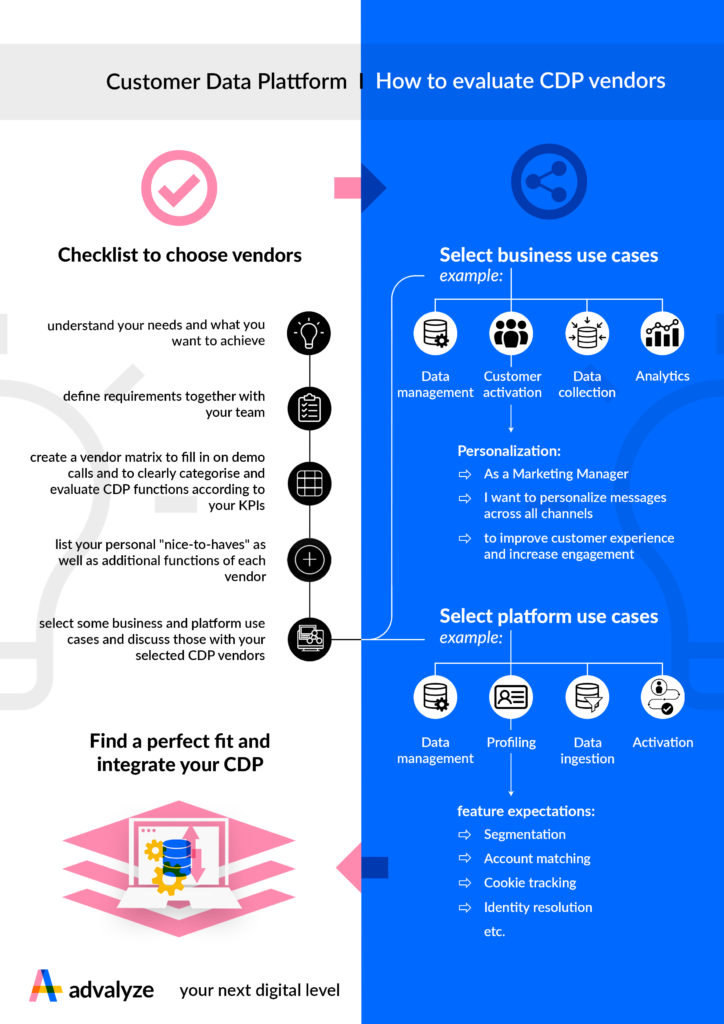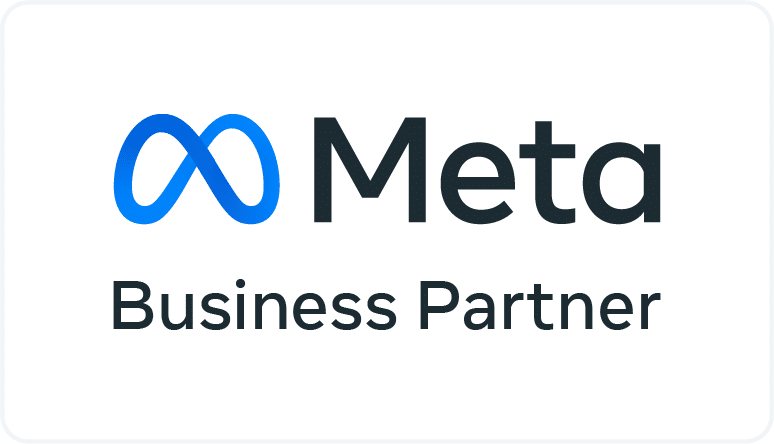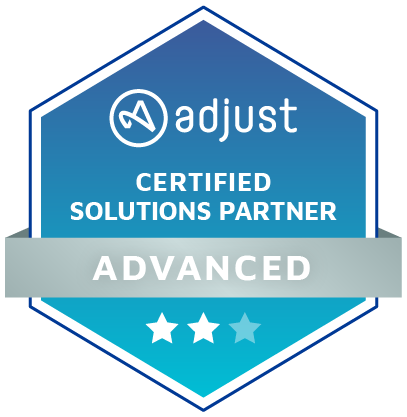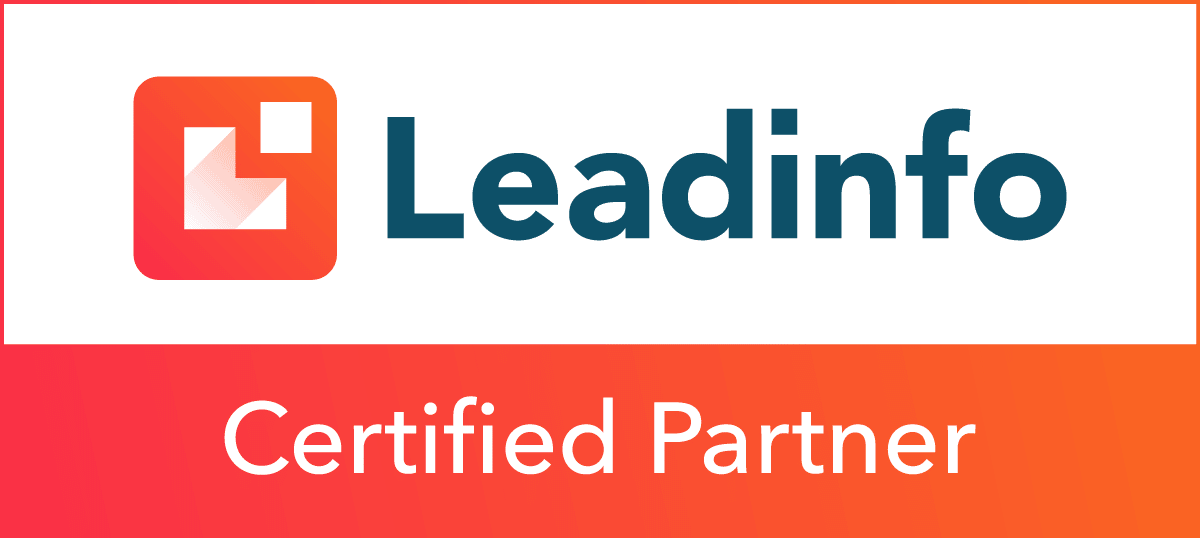It has never been more essential to manage your data effectively and be compliant with GDPR. The outbreak of COVID-19 has impacted every aspect of life. One of these impacts is on how businesses have had to adapt and undergo a digital transformation, with customer data having to be up-to-date, multi-channel and cross-device.
Some larger businesses need access to real-time customer data at glance whilst having multiple different tools in the tech-stack. Some businesses have dozens, in some cases hundreds which are all connected through the flow of data. At scale, this can become unmanageable.
Data is messy and a CDP is here to organize this data into something usable whether that is to create customer personas or begin a retargeting campaign.
This digital shift will not reverse, it is the new normal. If there is a right time for you to consider investing in a Customer Data Platform (CDP) for your technical infrastructure, that time is now.
What’s a Customer Data Platform?
Between January and September in 2019 there were a total of 7.9 billion data records exposed as a result of data mishandling by companies as large as Microsoft and T-Mobile. This was before the impact of COVID-19 changed how businesses operated, now in 2021, almost every business has become an online business to adapt to the new reality. This means that with an increased adoption of digital habits there has to be responsible handling of customer data and Personally Identifiable Information. Personally Identifiable Information (PII) is any information relating to a specific individual that is maintained by a business or agency.

Data handling is becoming more complex, with every customer you gain, the more tracked customer information you will have flowing through your stack to tools like your CRM system, data warehouse, product analytics tool, messaging system… you get the picture.
This is where a Customer Data Platform positions itself within your technical infrastructure, or tech-stack. All data sources flow into the CDP, which makes it a lot easier for any business team to access it and use it to create audience segments or view customer data at an individual level.
How do Customer Data Platforms work?
Customer Data Platforms exist within the stack to collect 1st party data from all the other tools in your tech-stack and store it in a way that makes it easily accessible for your teams to utilize. On top of this, it’s also there to build and manage audience segments based off of the data that flows into it.
With this data flow being collected and segmented, you will then be able to activate it for usage in your marketing campaigns with other tools you use such as your customer messaging system, CRM, or even performance marketing campaigns.
Customer Data Platforms and data quality
There is also the ongoing battle of data quality. With a CDP you have the ability to see how your data is structured and how accurate it actually is. You would also have the ability to control which events are passed on to each system or other tool you are working with, meaning it is much easier to govern your data and access it for customer requests e.g. deletion, aka “the right to be forgotten”.
A customer data platform will create a database of your customers that can be accessed by other systems. This can be seen as the location in your stack from where you can gain customer insights that can be used for engagement.
Why use a Customer Data Platform?
Achieving enlightenment through data handling in these times can be difficult, customer data can be messy and raw with a single customer having between 10 – 10,000 data points depending on your business. There are many different reasons why a CDP can help your business, but for the purposes of this article I will focus on using marketing data and personalization.
Using marketing data with a CDP
Data is sourced and flowing from every tool in your stack to a central point such as a data warehouse, used for campaigns and then visualized. This scenario is standard for pretty much every online or app based business. With any CDP you will find that how they work is entirely dependent on what data is being tracked and sent from every tool in your stack. And how it works is dependent on how you have set up your technical infrastructure. To put the scenario as simply as possible – garbage in, garbage out.
Effective data management and investing time in the initial tool setup, connections and data flows is important. Data is messy and a CDP is here to organize this data into something usable whether that is to create customer personas or begin a retargeting campaign.
We can help you choose the best CDP for your business
Each data point that aligns with your business KPIs must flow through the Customer Data Platform and can then be organized accordingly and to your benefit. Take the time to make sure what is flowing through your stack is data that you can act on.
Data personalization with a CDP
Personalization and marketing campaigns based on user behaviour are growth methods which are common practice in 2021 and are proven to have an increased effect on customer engagement and retention when using marketing or customer messaging campaigns.
Customer Data Platforms can also be used to help create behavioural marketing campaigns by using 1st party customer data and not relying on cookies or 3rd party data. What this means is that you could deliver a personalized experience to the customer using 1st party data and all in real-time.
CDP’s are here to help enable granular, data-driven marketing campaigns using tracked data such as geolocation, behavioural traits and interests as well as web analytics.
When using a CDP you have a single customer view (SCV), this means that you can deliver campaign messages at the right time, to the right person, based entirely on the data flowing through you CDP. This level of personalization executed across multiple marketing channels can really improve performance when integrated with other marketing tools.
CDP’s are here to help enable granular, data-driven marketing campaigns using tracked data such as geolocation, behavioural traits and interests as well as web analytics. In order to use behavioural marketing campaigns effectively you need 1st party data sets that are cleaned and organized, which is part of what makes having a CDP so useful.
If you want to create granular segments composed of all the different data points flowing through your stack and use them to personalize your campaigns and provide a better customer experience, then a CDP is something that you can utilize for this. In doing this, you are also able to improve the customer experience by utilizing their data points and using messages that suits them. Personalization has become an expectation in 2021 and it’s important your customer journey and the campaigns reflect this as a result of the data you gather.
Customer Data Platforms and GDPR
With a CDP, you can also effectively manage and keep track of data in line with GDPR and ongoing regulation changes. Using a CDP to manage data can make consent management a much less arduous task. Even though this landscape is constantly changing and legislation means that every business has to adapt, you will have easier access to cleaner and more organised data.
Whilst this doesn’t mean you can automatically comply with this using a CDP, it means that you can use a Consent Management Platform (CMP) and use both side-by-side or integrated so that you understand what consent is given by users and how it will affect the data you are using that flows to your CDP.
Should I invest in a Customer Data Platform?
CDP’s exist to help you manage your data and unify it within a central location. Through this data you can understand the needs of your customer and who they are. In doing this, you can create more granular segments and make informed marketing decisions for campaigns.
Ask yourself the following questions:
- Are you finding it hard to organise online and offline data?
- Are you finding it difficult to act on the data you have?
- Do you understand your customer journey well enough, and can you offer your customers a better experience?
- Do you want to become more data regulation compliant?
- Is understanding the customer more and offering personalization important for your business?

If the answer to these questions is yes, you may want to consider investing in a CDP to help you manage your data more effectively, improving your customer experience (CX) and create more meaningful engagement campaigns.
How to evaluate a Customer Data Platform for your business
There are many CDP’s on the market that can help you achieve data driven enlightenment. These can range from market leaders like Segment through to more recent disruptors like mParticle. The process of selecting the right CDP for you might not be a fast process and it’s important you understand what each provider offers and how it fits with your business needs.
- To evaluate CDP vendors and select the right tool, I would recommend firstly looking at what you want to achieve if you were to invest in a CDP, the questions listed above should get you started.
- Also, consider gathering requirements from your team.
- You can also create a vendor matrix to fill in on demo calls and attribute a certain number of points to each feature that fits to your KPIs. Think about where this fits with your long-term strategy or roadmap and how it would sit within your technical infrastructure.
- Next, I would create a list of nice-to-haves or even just expected functionality you want to see from a CDP vendor.
- Finally, and maybe most importantly, select some business and some platform use cases to make sure you find the right solution for you.
CDP selection based on business use cases
At business level, you can think about such use cases that may fall under the following headings: Data management, Data collection, Customer activation, Analytics. Then select a specific example that falls under one of these categories, for example: Personalization. You can then break these down into acceptance criteria:
- Customer activation → Personalization
- As a → Marketing Manager
- I want → To personalize messages across all channels based off of customer data
- So that → I can improve customer experience and increase engagement
Need help with your CDP?
CDP selection based on platform use cases
You can do a similar exercise for platform use cases. Once again, your use cases could be categorized as: Data management, Data ingestion, Profiling, and Activation. Then select a category, for example: Profiling. Now break down your acceptance criteria as feature expectations:
- Segmentation
- Account matching
- Cookie tracking
- Identity resolution…
What is shown above is one approach you can take to begin your steps towards making contact with CDP’s of your choice. It’s worth taking the time to do this before arranging demos with different vendors. This will give you a much clearer idea of what you are looking for.
Arranging demos with CDP vendors
Once you have gathered feedback from your team or stakeholders, created your use cases and done some research you can begin the next stage of the process, arranging demos. You can even share use cases with the selected vendors so they can address your needs directly.
Use your matrix throughout your demo sessions to keep track of what vendors are offering and how they fit with your business needs, KPIs, technical infrastructure and use cases.
Last things to consider
In summary, be sure to consider preparation times and to have all of the above in order before attending some vendor demos. It is also worth seeing if each vendor has case studies and any references they can put you in touch with.
Finally, ensure you get a complete cost breakdown from each vendor, be sure to check for any extra costs that go beyond the initial licence agreement or packaged tier price.
If you ever need help with finding the right CDP feel free to reach out to us. We would be happy to help.







